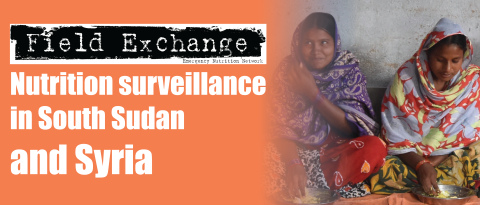Soya, maize and sorghum-based ready-to-use therapeutic food with amino acid for treatment of severe acute malnutrition
Research snapshot1
Development of more cost-effective ready-to-use therapeutic food (RUTF) for the treatment of severe acute malnutrition (SAM) is a global public-health priority. To date, previous lower-cost recipes have been less effective than the standard peanut and milk (PM)-based RUTF, particularly in children aged less than 24 months. This study aimed to compare the efficacy of the PM-RUTF to a milk-free soya, maize, and sorghum (FSMS) RUTF enriched with crystalline amino acids without cow milk powder, and a milk, soya, maize and sorghum (MSMS) RUTF containing 9.3% skim cow milk powder, both of which provide a substantially lower cost alternative. A non-blinded, three-arm, parallel group, simple randomised controlled trial was undertaken in 21 clusters of three health districts in central Malawi. Between September 2015 and June 2016, a total of 22,790 children were screened. Of these, 2,277 were diagnosed with SAM and 1,347 randomly assigned to either the FSMS-RUTF (n=454), the MSM-RUTF (n=435), or the PM-RUTF (n=458) study groups. Another 48 children were excluded from the study after randomisation (because consent was withdrawn or medical complications became apparent), after which 1,299 were finally included (795 aged 6-23 months and 504 aged 24-59 months). Those children with SAM who did not meet study criteria2 received routine treatment from pre-existing outpatient therapeutic services.
In intention-to-treat analyses, FSMS-RUTF showed noninferiority for recovery rates in children aged 24-59 months (Δ: 21.9%; 95% CI: 29.5%, 5.6%) and 6-23 months (Δ: 20.2%; 95% CI: 27.5%, 7.1%) compared with PM-RUTF. MSMS-RUTF also showed noninferiority for recovery rates in children aged 24-59 months (Δ: 0.0%; 95% CI: 27.3%, 7.4%) and 6-23 months (Δ: 0.6%; 95% CI: 24.3%, 5.5%). Noninferiority in recovery rates was also observed in per-protocol analyses. For length of stay in the programme (time to cure), both FSMS-RUTF in children aged 24-59 months (Δ: 2.8 d; 95% CI: 20.8, 6.5 d) and 6-23 months (Δ: 3.4 d; 95% CI: 21.2, 8.0 d) and MSMS-RUTF in children aged 24-59 months (Δ: 0.2 d; 95% CI: 23.1, 3.6 d) and 6-23 months (Δ: 1.2 d; 95% CI: 23.4, 5.8 d) were not inferior to PM-RUTF. FSMS-RUTF was also significantly better than PM-RUTF at increasing haemoglobin and body iron stores in anaemic children, with mean haemoglobin increases of 2.1 (95% CI:1.6, 2.6) and 1.3 (95% CI: 0.9, 1.8) and mean body iron store increases of 2.0 (95% CI: 0.8, 3.3) and 0.1 (95% CI: 21.1, 1.3) for FSMS-RUTF and PM-RUTF, respectively. The authors conclude that FSMS-RUTF without milk is efficacious in the treatment of SAM in children aged 6-23 and 24-59 months and is better at correcting iron deficiency anaemia than PM-RUTF.
Endnotes
1Bahwere, P., Akomo, P., Mwale, M., Murakami, H., Banda, C., Kathumba, S., Banda, Chimwemwe., Jere, S., Sadler, K. and Collins, S. (2017). Soya, maize, and sorghum-based ready-to-use therapeutic food with amino acid is as efficacious as the standard milk and peanut paste-based formulation for the treatment of severe acute malnutrition in children: a noninferiority individually randomized controlled efficacy clinical trial in Malawi. Am J Clin Nutr 2017;106:1100–12.
2 Based on home distance, age >59 months, mother pregnant, weight-for-height <-3 but MUAC ≥115mm and others.


